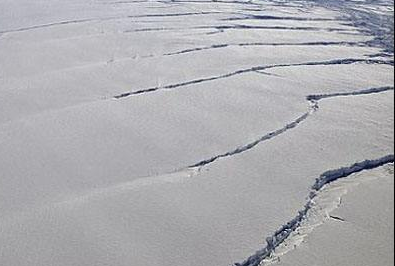(单词翻译:单击)
AUDIE CORNISH: Now to our NewsHour Shares, something that caught our eye that might be of interest to you, too.
For more than 60 years, British researchers have monitored changes in the world's atmosphere from a remote lab in Antarctica.
Now, for the first time ever, this facility will close, at least temporarily, to protect the safety of its residents.
The NewsHour's Julia Griffin explains.
JULIA GRIFFIN: At the bottom of our planet, on top of more than 400 feet of ice, sits a state-of-the-art research station called Halley VI.
DAVID VAUGHAN, Director of Science, British Antarctic Survey: It's an extraordinary place to be, sitting in this, what feels like a large ship on the ice, looking out across the vast expanse of essentially nothingness.
JULIA GRIFFIN: David Vaughan is director of science for British Antarctic Survey, which runs Halley VI.
DAVID VAUGHAN: The science that we do at Halley isn't just about exploring. It's actually making measurements that really inform how we interact with our planet, about the risk of severe space weather storms that might knock out our satellite GPS systems.
It's about looking at the emissions of carbon dioxide and methane at the last place on Earth that is seeing those emissions.
JULIA GRIFFIN: To do that, Halley VI is a feat of engineering in one of the most extreme environments. Its eight interlocking pods shield up to 70 researchers and support staff from freezing. Special hydraulic legs lift the pods as snow accumulates, and when the time comes, the pods can be towed on their ski-like feet.

DAVID VAUGHAN: The ice shelf itself moves. So if we're going to maintain the same geographical position, we have to be able to move across the ice.
JULIA GRIFFIN: Another reason they might want to move? Should that ice shelf threaten to become an iceberg.
This summer — yes, it's summer in the Southern Hemisphere — Halley VI was already being towed 15 miles inland to avoid this decades-old chasm, when a new, nearly 30-mile-long crack opened suddenly on its other side.
DAVID VAUGHAN: The crack that you are seeing goes all the way down to the ocean. And if you can look deep enough in there, you would see seawater. Really, the potential interaction between those two cracks and how then the ice shelf would respond as a whole, that we actually find very unpredictable.
JULIA GRIFFIN: The agency has decided to vacate the station altogether before winter.
DAVID VAUGHAN: In the summer, we have the opportunity to remove people relatively rapidly from the station, but, during the winter, when it is cold and dark and stormy for many months at a time, that's the point at which we would find it quite hard to get people out.
JULIA GRIFFIN: While other ice shelves on the Antarctic Peninsula have been impacted by climate change, Vaughan thinks this might be part of a natural cycle.
DAVID VAUGHAN: Maybe the ice shelf will go back to a new equilibrium in time, but, at the moment, we just can't predict with any certainty how long that will take.
JULIA GRIFFIN: This marks the first time scientists will be removed from a Halley station. British Antarctic Survey hopes they will return next November.
For the PBS NewsHour, I'm Julia Griffin, slightly warmer in Arlington, Virginia.
JUDY WOODRUFF: Nice place to take a vacation.
AUDIE CORNISH: Right, only slightly warmer.


